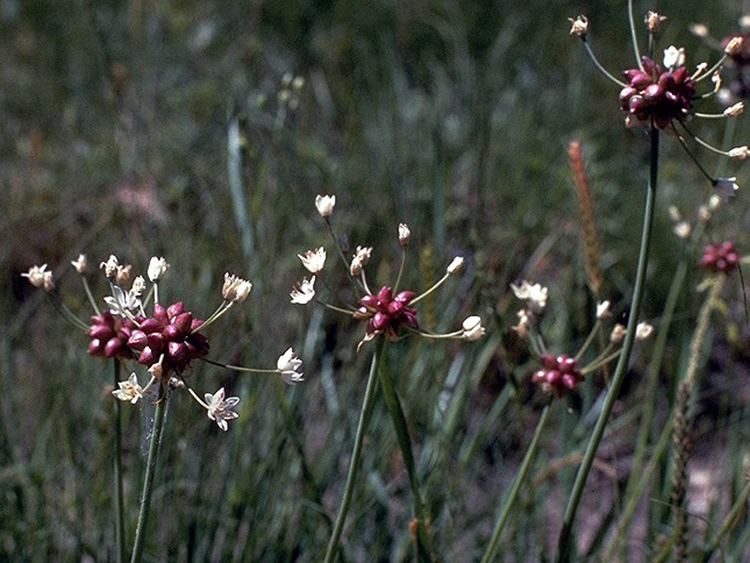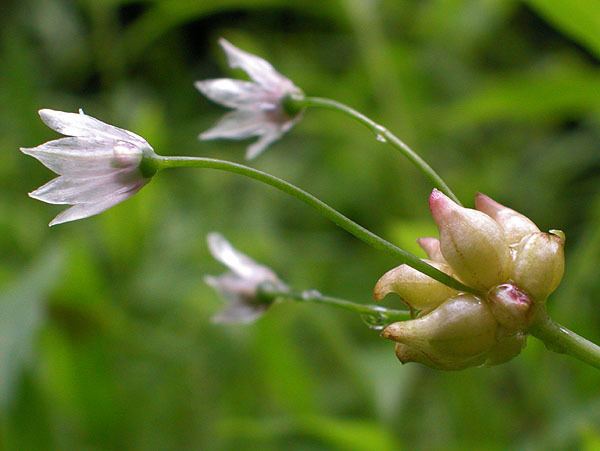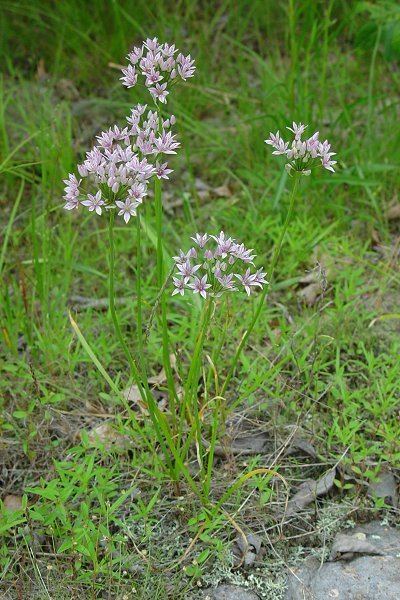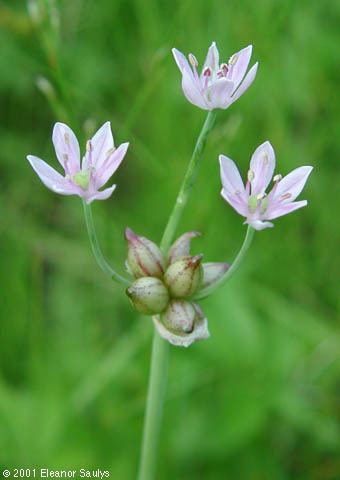Clade Monocots Rank Species | Clade Angiosperms Higher classification Onions | |
 | ||
Similar Onions, Allium drummondii, Allium stellatum, Allium acuminatum, Allium cernuum | ||
Allium canadense, also known as Canada onion, Canadian garlic, wild garlic, meadow garlic and wild onion is a perennial plant native to eastern North America from Texas to Florida to New Brunswick to Montana. The species is also cultivated in other regions as an ornamental and as a garden culinary herb. The plant is also reportedly naturalized in Cuba.
Contents

Description
Allium canadense has an edible bulb covered with a dense skin of brown fibers and tastes like an onion. The plant also has strong, onion-like, odor. Crow garlic (Allium vineale) is similar, but it has a strong garlic taste.

The narrow, grass-like leaves originate near the base of the stem, which is topped by a dome-like cluster of star-shaped, pink or white flowers. These flowers may be partially or entirely replaced by bulblets. When present, the flowers are hermaphroditic (both male and female organs) and are pollinated by American bees (not honeybees) and other insects. It typically flowers in the spring and early summer, from May to June.
Varieties

The bulblet-producing form is classified as A. canadense var. canadense. It was once thought that the tree onion could be related to this plant, but it is now known that the cultivated tree onion is a hybrid between the common onion (A. cepa) and Welsh onion (A. fistulosum), classified as A. × proliferum.
Five varieties of the species are widely recognized:

Uses

The Canada onion is cultivated as a vegetable in home gardens in Cuba, scattered locally in the south to western parts of the island. It was formerly collected from the wild to be eaten by Native Americans and by European settlers. Various Native American tribes also used the plant for other purposes: for example, rubbing the plant on the body for protection from insect, lizard, scorpion, and tarantula bites.
This plant can cause gastroenteritis in young children who ingest parts of this plant. Chronic ingestion of the bulbs reduces iodine uptake by the thyroid gland, which can lead to problems. No specific treatment is suggested other than to prevent dehydration (Lampe and McCann 1985). Livestock have also been poisoned by ingesting wild onions, and some have died (Pipal 1918). Horses have developed hemolytic anemia from ingesting wild onion leaves (Scoggan 1989).
